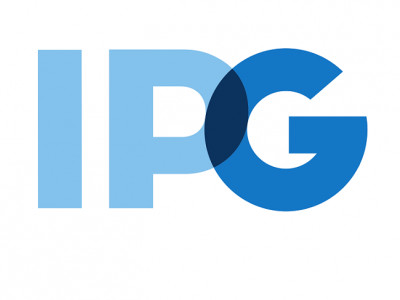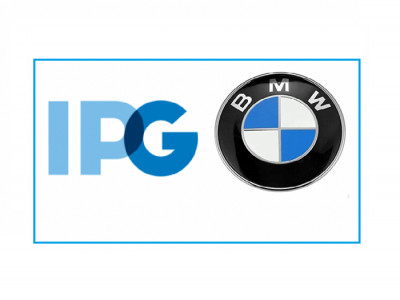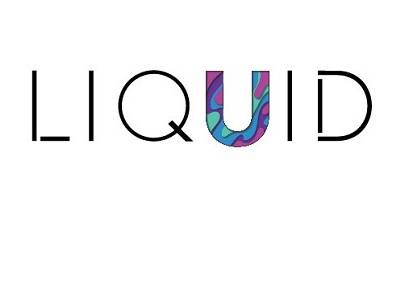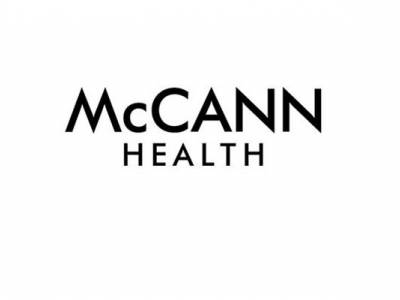The new realities of consumer decision making
Terry D Peigh, Senior Vice President & Managing Director, Interpublic Group, was in Mumbai earlier this week to present the findings of the research, ‘The New Trust Imperative – Evolution of Consumer Decision Making with Fast Changing Media’. Cogito Consulting, the independent consulting division of the FCB Ulka group, is the research partner. The report attempts to dissect what goes into a trust evaluation by a consumer – exactly what’s considered when a consumer goes about making a decision to trust or not trust.
Following is the presentation made by Peigh, titled ‘The New Trust Imperative’.
The new trust imperative
For the past six years, we at IPG have fielded an important piece of global research that looks at the changing nature of consumer decision making. We call this New Realities, as clearly the emergence of many new media channels and new sources of product information have created a new reality in how today’s consumer goes about evaluating a product and making an eventual decision.
Over this time, we’ve seen a dramatic shift in how consumers view the “consumption” of product information…and the channels they most value in making product decisions. They’ve evidenced changes in their degree of comfort with new information; their desire for information as a way to gain “social value”; the joy they receive in learning about brands; how information has made them more confident in brand choices; and how they segment in terms of valuing product information.
But underneath this dramatic growth in valuing product information has emerged a very powerful requirement for that information. …the demand for total trust. In this paper, we’ll review how today’s consumer is changing in their consumption of information and lay that up against their pressing need for information that is highly trusted. As part of that, we’ll review the research we’ve recently conducted that attempts to dissect what goes into a trust evaluation by a consumer – exactly what’s considered when a consumer goes about making a decision to trust or not trust.
In total, we see this information as critically valuable in learning about the ever-changing habits and preferences of today’s consumer, and in designing marketing and marketing communications programs that respond to this new reality.
The New Realities research
In 2009, IPG saw a need to help our clients get a better understanding of exactly how consumers around the world were dealing with the many new channels providing product information. No longer was it a matter of a consumer learning about a product from just a print ad or a TV commercial. In a very short period of time, she was also confronted with product information served to her via websites, blogs, numerous social sites, price comparison sites, product comparison sites, mobile platforms…and, oh yes, still (and increasingly!) from her friends down the street. We wanted to know, and to share with our clients, how she was coping with all this new information. Was the additional product information frustrating? How did it affect her confidence in the product? Did she enjoy this learning? Was she inclined to share what she learned? To what extent did the consumers differ in how they “consumed” this information?
With these questions in hand, we began the research that year in two countries – US and China. Since then, we’ve expanded it to several other key countries: Brazil, India, Russia and England. We now have multiple years of data from these countries and are able to make observations and comparisons among countries, and within a country over time.
We conducted every wave of the study among 600 people per country, with an equal mix of Gen X, Gen Y and Baby Boomers, equally split men/ women. Working with our research partner, we sampled people from a geographic cross section of the country’s population. (The questionnaire was submitted online, so we need to appreciate that the results obviously reflect the attitudes of a computer-literate audience. But with this audience representing a prime target for many of our clients, we were comfortable with that screen.)
Attitudes toward information
When we present these research results to clients and industry groups, we often begin by asking the audience to provide their opinion on what country ranks highest on a few different measures. Let’s try it here.
Among all the countries researched (US, China, Russia, India, Brazil and England), for each statement below which country do you think ranks highest in saying:
- “Information gives me control in my buying decisions”?
- “I have personal pride in knowing a lot about certain brands”?
- “I enjoy researching information for buying decisions”?
- “Brand information and brand reputation matter more these days than ever before”?
The answers might surprise you (as they often surprise our audience of brand marketers). If you got at least half correct, consider yourself one of the very few!
It turns out that the Russians are most likely to say that information gives me control in my buying decisions. The Chinese rank highest in saying they have personal pride from brand knowledge, and in saying brand information and reputation matter more these days. And the Brazilians are most likely to agree that they enjoy researching information for buying decisions.
The point being that it has become very difficult (and dangerous) to use old standards of country groups and cultures when determining what a particular group of people does and does not want when it comes to consuming product information today.
What we’ve learned
Clearly, product information is valued more and more by consumers around the world. As noted in Figure 1, in all countries surveyed their populations strongly agree that information availability has made them more confident in their brand choices, and has increased their satisfaction with brands. And we see all data points increasing over the last two waves of this research (2013 and 2015).
Figure 1
Importantly, this product learning is a real source of joy and fulfillment around the world (Figure 2). A very significant segment of the population finds the researching and learning about products to actually be fun, rewarding and enjoyable. And was seen in Figure 1, this joy and fulfillment has increased in most countries over the last two years. (When we look at earlier waves of the research, there is clearly an even longer term increase in these measures).
Figure 2
We have found that much of this enjoyment and fulfillment from product learning is sourced in consumers’ finding social value from that information. Their knowledge about a category or product gives them “social currency” – information to share with others when discussing various products. In so doing it enhances their sense of self, and self-esteem. (Figure 3). (A good example of the longer term growth in this attitude is China, where we’ve seen consumers’ strong agreement on the measure of “people admire me because of my expertise” increase from 25 per cent in 2009, to 57 per cent in 2015)
All of this data reinforces the need for marketers to aggressively supply consumers with this desired product information, and to do so in such a way as to make it easy for consumers to obtain it, internalise it, enjoy it, and pass it on. Truly, consumers are one of the most important (and cost effective) channels of information a marketer could ever ask for. They present their brand knowledge to friends and families with enthusiasm, and we know that their words – due to their trusted nature – are usually the most respected and valued by consumers versus alternative “media” channels. The key question, addressed later in this paper, is how to instill trust in the information provided to the consumers, so she accepts it wholeheartedly, embraces it, and gladly passes it on.
Figure 3
Luckily for marketers, consumers today often manifest this desire for social currency by becoming active advocates for brands. As noted in Figure 4, many of the respondents studied in our research have shown growth over the last two years in their desire to actively advocate for brands. And in countries like China and India, the overall levels of advocacy interest are very high.
Figure 4
So we’re seeing continued and dramatic growth in consumers wanting more and more information to help with their purchase decisions. They’re finding the information to be a source of happiness and fulfillment. For many, it actually provides them with a social currency that positively affects their sense of self and helps pave the way for interaction with friends. And a great many are more than happy to take that new found brand understanding and actually go so far as to advocate for the brand – to, in essence, become new (inexpensive) media channels for the brand.
But while all of this is pleasing for marketers to hear, today’s consumers worldwide are also putting up a hurdle that the brand information must meet in order for them to gladly accept and act on this product information. And that hurdle is their growing demand for trust.
One of the questions we asked consumers in our New Realities study is to what extent do they always seek out trusted sources of information on brands. Not only are the absolute levels of “strongly agree” very high for the countries, but these levels have increased since the 2013 study. (Figure 5) As noted below, in Brazil, China, India, and Russia, over two thirds of the respondents now strongly agreed that they always seek out trusted sources.
Figure 5
The new demands for trust
A scan of news stories today across the world points to many instances where people have lost trust. We see them losing trust in government, religion, business, and in brands. A few facts to underscore this development:
- According to the Edelman Trust Barometer, when consumers around the world were asked about their level ofsatisfaction with the way their government is running their country, the highest scoring country reported only 31 per cent satisfaction.
- The same study from Edelman notes that two-thirds of the world’s countries have populations that fall into the “distruster” category…and that this level is rising every year.
- A Cohn & Wolfe study in 2014 indicated that only 3 per cent of Americans, British, Italians, Swedes, French and Spaniards say that “big businesses are very honest and transparent”. And in Germany, the number is only 1 per cent.
And the marketing world is not helping itself when it comes to engendering trust.
- A MediaBrix/ Forbes report indicates that 86 per cent of US Internet users feel they have been misled by videos that appeared to be content, but turned out to be sponsored ads.
- In the UK, only 20 per cent of consumers report a high level of confidence in information on social media (Source: YouGov.UK; 2014).
- And 57 per cent of marketers say that bad behavior by brands on social media is eroding trust in their content (Source: KeepSocialHonest.com/YouGov Survey).
Marketers have heard for years…and, of course, it’s really is common sense… that having product information trusted by consumers is very important. We’ve all seen report after report showing the connection between trust and higher purchase intent, stronger repeat purchases, higher share of wallet, a willingness to pay a price premium, and even stronger growth in a brand’s stock price.
But what we’re seeing now is a dramatic increase in size of the trust hurdle consumers are putting up. If there’s any doubt about the veracity of the information, today’s consumer will turn elsewhere.
At a global level, Figure 6 shows consumers are becoming more discriminating, and “holding brands to higher standards than ever before.” With the exception of Russia, again we’ve seen solid year-over-year growth in this measure since 2013.
Figure 6
Figure 6 demonstrates that the demand for a “higher standard” translates to a greater seeking of trusted information on brands. And we’ve also seen an increase in consumers rejecting manufacturer-led information, with distrust being highest in China (Figure 8).
Figure 7
Figure 8
In order to obtain a deeper understanding of this dynamic, we set out to understand which attributes drive brand trust in the minds of today’s consumers. We factor analyzed 30 attributes (for example, reliability, transparency, responsiveness, innovation, etc.) globally and identified six different factors that contribute to trust with varying levels of influence.
The top two drivers of trust were most closely connected to a manufacturer’s products: product performance and claim truthfulness. Product performance was seen as a function of quality (I’m always confident in the quality of this brand), reliability (This brand always delivers what I expect) and the ability to meet expectations on a consistent basis (I’m never disappointed with this brand). Claim truthfulness was considered a function of a brand’s character (This brand has a character that I respect; can always believe) coupled with a history of producing reliable claims in the past (I can always count on this brand to tell the truth about itself).
The second, but significantly lower, set of drivers were “innovation” and “customer-centricity”, where innovative is considered a function of product updates (This brand is always up-to-date) and the frequency by which a manufacturer brings such products to market (This brand is a leader/continually innovates). Customer-centricity, seen as slightly less important than innovation and significantly less important than the product-related drivers, stemmed from a brand being seen as putting their consumer’s needs front and center (This brand has great respect for customers/is always looking out for its customers). While seen as viable factors, surprisingly “support for social causes” and “transparency around criticisms” weren’t considered critical drivers of brand trust.
A few things for brands to consider
Product efficacy rules the day. Building things that work (and that consumers have a need for) is a sure-fire way to gain their trust. These days, with the continued increases in available information, consumers are becoming increasingly skeptical. It’s essential to pair good products with claims that accurately represent their effects without setting unfair or unrealistic expectations. Overpromises might get you the first sale, but they’re awfully hard to sustain over the long-term.
Social responsibility efforts are good (and in some categories and emerging markets, essential), but they can’t make up for product short-comings. Instead of funding expensive yet disconnected CSR efforts, brands might do better looking for ways to harness their product’s power in a participatory, socially responsible fashion. A recent example of this can be seen in Kimberly-Clark’s efforts to remove the cardboard center tubes of its Scott Naturals brand toilet paper, or Crayola launching its Meld N Mold kit allowing kids to recycle old crayons and transform them into new packs of custom-colored crayons.
While innovation is on the tongues of every TED-talking CEO, consumers are quickly becoming trained to expect fast turnarounds of the latest products. Once seen as the provenance of the Silicon Valley few is now the headline of the many, and while essential to driving revenue, “innovation” seems to come up a little short when driving the trust scores of today’s consumer.
Time will tell how consumers react to the ever-increasing wealth of information available to them at their fingertips. But one thing’s for certain. A brand will always want consumers to answer affirmatively to the all-important question, “can I trust you?”

















Share
Facebook
YouTube
Tweet
Twitter
LinkedIn